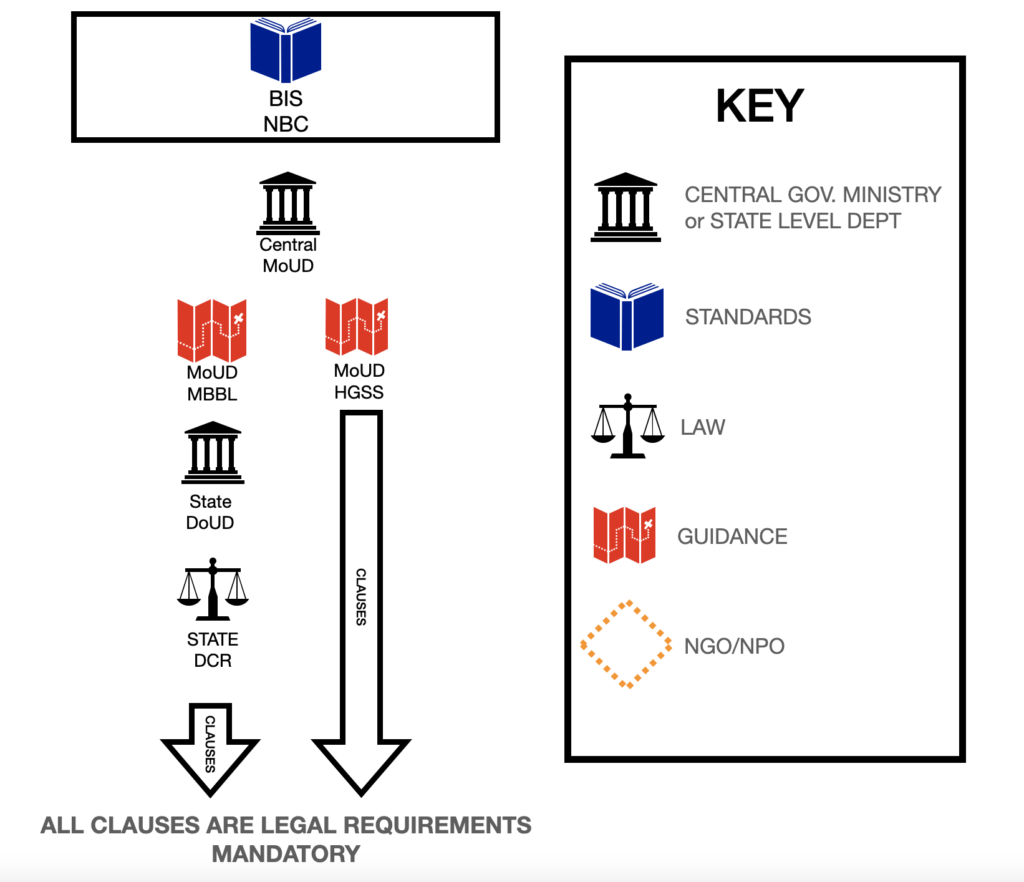Accessibility Laws

Rights of Persons With Disabilities 2016
The RPwDA 2016  is the law that covers all aspects of the rights of PwD such as equity in opportunities in all aspects of life including education, work, sport, and entertainment. It also mentions the requirement fo all buildings and public areas to be made accessible for PwD. This is a Burea of Indian Standards Publication (BIS).
is the law that covers all aspects of the rights of PwD such as equity in opportunities in all aspects of life including education, work, sport, and entertainment. It also mentions the requirement fo all buildings and public areas to be made accessible for PwD. This is a Burea of Indian Standards Publication (BIS).
Sample Equal Opportunities Policy with Forms
A sample of an Equal Opportunities Policy with an Annexure containing a typical Self Declaration Form. Every establishment, whether privately owned or government local body, must incorporate an EOP in its HR operating policies.
Model Building Bye Laws 2016
The MBBL is a guidance document that is effectively a template for the state level DCRs. The central government instructed each state Department of Urban Development to produce a state-level Development Control Regulations using this document as its template. This is a Ministry of Urban Development publication (MoUD).
Development Control Regulations 2016
The *DCR 2016 sometimes called “building bye-laws” are mandatory standards required for construction development. Each state was tasked with enacting its own DCR from the template guidance document, The Model Building Bye-Laws (MBBS). This is a state-level Department of Urban Development publication. There are sections in the *DCR that cover the same material in HGSS. Builders are more familiar with *DCR but not so much with the section on accessibility for PwD.
Harmonised Guidelines and Space Standards 2016
HGSS is yet another government document on the subject of accessibility standards. The RPwDA 2017 rules specify that development control regulations permissions must first require compliance with HGSS.
National Building Code 2016
This covers all aspects of the standards for buildings. Most of it doesn’t directly relate to the needs of PWD but there are some parts that do specifically include features for PwD such as chapter 13 REQUIREMENTS FOR ACCESSIBILITY IN BUILT ENVIRONMENT FOR ELDERS AND PERSONS WITH DISABILITIES and LIFE SAFETY.
There is also one specific section that is only concerned about Accessibility for PwD, Annex B ANTHROPOMETRICS AND REQUIREMENTS FOR ACCESSIBILITY IN BUILT-ENVIRONMENT FOR ELDERS AND PERSONS WITH DISABILITIES. This section defines the specification regarding stairs, ramps, toilets, parking, alighting points, signage, floor surfaces, and features for the Visually Impaired such as braille and tactile tiling.
Excerpts from NBC 2016 regarding the needs of PwD  We have combined the relevant sections in this document.
We have combined the relevant sections in this document.
National Education Policy 2019
The NEP 2019 deals with inclusion and accessibility for PwD. In P6.8 Education of children with special needs, it discusses the accessibility of the infrastructure and transportation. 7. Efficient Resourcing and Effective Governance through School Complexes, discusses how schools can work together in complexes to pool resources for Children with Special Needs (CwSN).
Central Public Works Department Manual on Accessible Built Environment 2019
The CPWD Manual on Accessible Built Environment 2019 publication covers most of what is found in the NBC Annex B. This covers all aspects of accessibility including ramps, parking, stairs, toilets, lifts, signage etc.